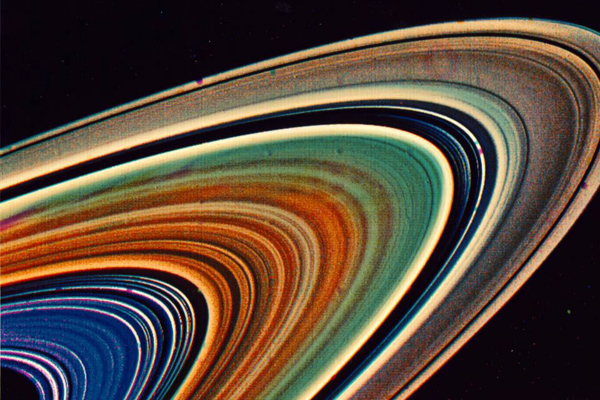
Why Does Saturn Have Rings Around It?

Since first entering the field of view of Galileo's telescope in 1610, Saturn's rings have evoked a sense of mystery. For four centuries, astronomers have contemplated them, but none of their attempts to explain why the rings exist have ever seemed quite right.
The best attempt made so far came just last month: Robin Canup at the Southwest Research Institute in Boulder, Colorado published a new theory of the formation of Saturn's rings in the journal Nature. Not only does Canup's theory match observations better than any other, it's also awesome.
Canup proposed that the rings are the icy remnants of a bygone moon. When Saturn and its satellites formed along with the rest of the solar system 4.5 billion years ago, one of Saturn's large moons formed too close to the planet to maintain a stable orbit.
The moon started spiraling inward, and as it did, Saturn's gravity ripped away its icy outer layers and flung them into orbit to create the rings we see today. After 10,000 years of this denuding, the moon's leftover rocky core finally crashed into Saturn and crumbled.
Canup constructed a computer model simulating this series of events. The model accounts for the fact that 90-95 percent of Saturn's rings are composed of ice. Canup believes that the restrock and dustcomes from the meteorites that have peppered the rings for billions of years.
According to Larry Esposito, a leading planetary astronomer working on NASA's Cassini Mission to Saturn, previous models held that Saturn's rings originated either from a small moon or a passing comet that was torn to shreds by the planet's gravity. However, that notion failed to explain why the rings are so icy, because moons and comets contain a great deal of rock. Canup's "shaved ice" theory does the trick. "She has come up with a very clever way to explain the ring's composition," Esposito told Life's Little Mysteries.
The new theory can't explain everything zipping around Saturn, though, such as the small moons that dot the rings' outskirts. "Her theory holds that all the ring material should be composed of ice those small moons as well," said Esposito. "But they're not. They're rocky."
Sign up for the Live Science daily newsletter now
Get the world’s most fascinating discoveries delivered straight to your inbox.
Another ring astronomer, Matthew Tiscareno at Cornell University, told Life's Little Mysteries, "Although it is not the final word, I think Canup's basic idea has opened up what is likely to be a very productive line of thought."
But for the time being, while those rocky moons remain unaccountable, the mystery of Saturn's rings continues.
Got a question? Send us an email and we'll look for an expert who can crack it.
Follow Natalie Wolchover on Twitter @nattyover
Natalie Wolchover was a staff writer for Live Science from 2010 to 2012 and is currently a senior physics writer and editor for Quanta Magazine. She holds a bachelor's degree in physics from Tufts University and has studied physics at the University of California, Berkeley. Along with the staff of Quanta, Wolchover won the 2022 Pulitzer Prize for explanatory writing for her work on the building of the James Webb Space Telescope. Her work has also appeared in the The Best American Science and Nature Writing and The Best Writing on Mathematics, Nature, The New Yorker and Popular Science. She was the 2016 winner of the Evert Clark/Seth Payne Award, an annual prize for young science journalists, as well as the winner of the 2017 Science Communication Award for the American Institute of Physics.











